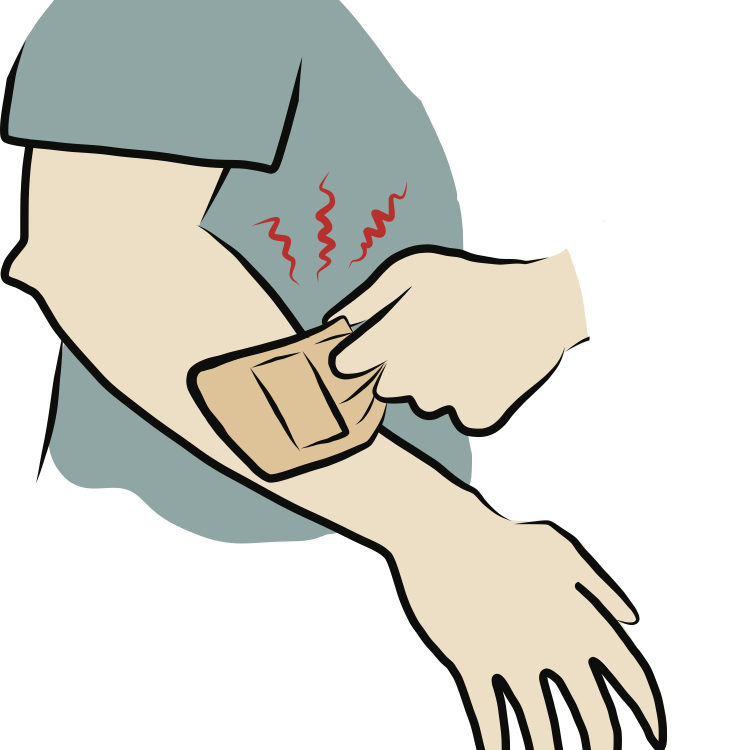Ergonomics in the Office: What to Do When We’re All Vaccinated

As COVID-19 vaccinations continue to roll out across the country close to half of the U.S. population has received at least one dose. A return to something that somewhat resembles a pre-pandemic is around the corner. As such, businesses are gearing up for a return to the workplace. That means taking preventive measures like upgrading ventilation systems.
But, in addition to these recommendations from the CDC, you can also foster a safer and healthier work environment through ergonomics.
What is ergonomics and why is it important?
Ergonomics defined by the International Ergonomics Association is:
[T]he scientific discipline concerned with the understanding of interactions among humans and other elements of a system, and the profession that applies theory, principles, data, and methods to design in order to optimize human well-being and overall system performance.
In short, ergonomics pulls from the following disciplines to optimize the interaction between people and their work environment;
- Anthropometry
- Biomechanics
- Mechanical engineering
- Industrial engineering
- Industrial design
- Information design
- Kinesiology
- Physiology
- Psychology
But, when it comes to the workplace environment specifically, ergonomics focuses on practices that will reduce physical stress on employees in order to prevent long-term injuries and disabilities, such as chronic neck pain, carpal tunnel syndrome, and other musculoskeletal disorders (MSDs).
In fact, according to the Occupational Safety and Health Administration (OSHA), MSDs account for more than one-third of all lost-workday injuries and illnesses. They’re also the result of repetitive motion, awkward positioning, and contact stress. When addressed, employers can expect improved employee engagement, performance, and productivity. Studies in the auto manufacturing industry have also found that ergonomics reduces absenteeism and errors.
Overall, promoting ergonomics will create a better and safer culture that will not only benefit your employees but also bolster your bottom line as you recover from the economic fallout from COVD-19.
How can you develop an ergonomic office? Well, here’s where to begin.
Perform an ergonomic assessment.
Also called an ergonomic risk assessment, Proactive MD explains that this “an objective measure of the risk factors in your work environment that may lead to musculoskeletal disorders or injuries among your workforce. . . . [The primary] goal of an ergonomic assessment is to identify these risk factors and quantify them so that you can make measurable improvements in the work environment.”
Only after completing a thorough ergonomic assessment will you be able to implement a safer, healthier, and less injury-prone workplace. But, how can you conduct such an assessment?
“At its core, conducting a successful ergonomic assessment is a simple process: Evaluate the work environment and evaluate how your workforce interacts with that environment,” adds the Proactive MD team. While that may seem broad, you’ll also have to take these 5-steps to get there.
- Review any existing data, such as claims data, workplace injury reports, worker’s compensation reports, and first aid logs.
- Choose ergonomics assessment tools like the WISHA Caution Zone Checklist or Hand-Arm Vibration Calculator (HAV)
- Gather subjective data by walking around the office to actually see the environment first-and. Also, ask your employees about any problems that they are experiencing.
- Gather objective data by taking the above “to develop a prioritized list of work activities and departments that you need to evaluate.”
- Analyze all data and prioritize risk so that you can make changes to the physical office, as well as the routines and behaviors of employees.
Optimize your workstation.
Next, recommend that your team create a more comfortable workstation by:
- Investing in ergonomic chairs and setting them up correctly. Ideally, your office should have chairs that support the spine. Remind everyone to adjust the height so their feet rest on the floor flat and that their knees are bent at a 90-degree angle. Also, everyone should be sitting with their backs upright. And, adjust armrests so that the shoulders are relaxed.
- Computer monitors should be placed directly in front of you and at an arm’s length away. The top of the screen should also be at eye level.
- The keyboard and mouse need to be within reach. When using these devices, maintain a neutral and relaxed position. Your hands should be kept below elbow levels.
- Objects like phones, staplers, or paperwork should also be easy to reach. If you can’t grab these items easily while sitting, stand up to retrieve them.
Alternate between sitting and standing.
In 2019, it was found that the average American adult spends roughly 6.5 hours per day sitting. However, since COVID-19 has led to a more sedentary lifestyle, this figure has most likely increased.
“We have definitely seen instances of increased sedentary behavior, especially with more people at home during lockdowns, and more unemployment,” Dr. Richard Yoon, chief of orthopedics at Jersey City Medical Center in New Jersey, told Healthline.
“Not only the physical effects but also the mental challenges posed by the pandemic have taken their toll,” Dr. Yoon said. “And I have seen that some of my patients are less active and visiting the fridge more often because of the loss of their old routines.”
Why’s this a problem? Because sitting too long can lead to an increase in weight gain, type 2 diabetes, heart disease, and even premature death. As such, it’s imperative that you assist your team to prioritize their physical health. And, an effective way to do this is with standing desks.
However, studies have also found that standing for too long can double one’s risk for cardiovascular disease. So, invest in a desk that allows for alternating between sitting and standing throughout the day. According to the University of Waterloo, the ideal sit-stand ratio lies somewhere between 1:1 and 1:3. That means for every hour you should at least stand for 30-minutes at a minimum and a maximum of 45-minutes for every hour.
Stretch and move every hour.
Even if you’re alternating between standing and sitting, you should encourage everyone to take a break every hour to do some light stretching exercises.
One idea would be leg lifts where you sit at the edge of your chair and lift one leg at a time up for around 10-seconds. It’s a simple way to get the blood flowing to the lower limbs without disrupting workflow.
Another suggestion would be an overhead shoulder stretch. Or, actually getting up for the desk and walking around the office or even taking a quick stroll outside.
Adopt the 20-20-20 rule.
Staring at screens all day can damage an individual’s eye cells. To counter this, recommend the 20-20-20 rule.
This simply means that for every 20-minutes you spend looking at a screen you should look at something else that’s at least 20-feet away for 20-seconds.
Set the right environment.
While this might be easy to overlook, make sure that you also take into consideration;
- Temperature. This is often heavily debated with previous research stating the ideal office temperature is between 70 and 73 degrees Fahrenheit. But, this varies depending on age, gender, weight, and humidity. Poll your team to find a temperature that almost everyone finds to be comfortable.
- Air quality. If you’ve adhered to CDC guidelines for ventilation, you’ve most likely cleaned or updated your HVAC systems. You may also want to look into a quality air purifier with a HEPA filter. This will effectively clean the air and remove pollutants like pollen, pet dander, and dust mites.
- Lighting. The US General Services Administration (GSA) requires that every work environment have a specific amount of light. For office lighting, these standards are set at 500 lumens per square meter. So, for a 6’ by 6’ cubicle a lighting fixture that provides the same amount of light as a 35-watt incandescent bulb is required.
Conclusion.
As you begin your preparations for reopening your office, make sure that you also don’t neglect ergonomics. Adopting healthy work routines and investing in the right equipment will keep your employees healthier and more productive. More importantly, these practices can prevent illness and injury at your workplace.



